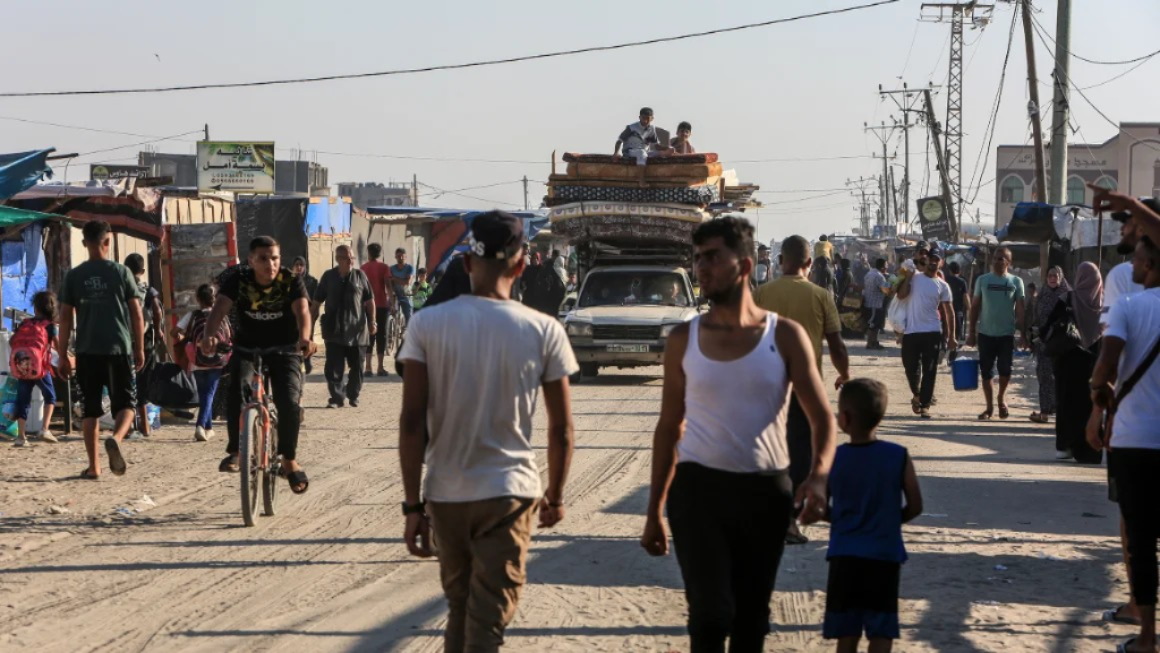Nearly 2 million people have been displaced in Gaza – almost the entire population – after the Israeli military last week ordered a further 80,000 people to evacuate parts of Gaza City amid a renewed ground operation, latest UN figures show.
The Israel Defense Forces (IDF) has stepped up assaults in several parts of the Strip, including the Shujaya neighborhood in the north, where it previously said it had dismantled Hamas.
UNRWA, the main UN agency for Palestinian refugees, estimates that up to 1.9 million people in Gaza have been internally displaced – about 90% of the population of the Strip, estimated by the UN to be around 2.1 million people. The number of displaced people rose from 1.7 million since Israel launched its offensive on the southern city of Rafah in May.
The fresh flurry of offensives raises questions about how and when Israel will wind down its war, which has been fought for nearly nine months with the aims of destroying Hamas’ military and governing capacities and rescuing Israeli hostages.
Israeli officials had said its incursion into Rafah – the southernmost point of Gaza to which Hamas was thought to have regrouped after Israel’s destruction of the north – would be the final stage of its war, but the uptick in fighting in the north suggests Hamas retains an ongoing presence.
The UN Office for the Coordination of Humanitarian Affairs (OCHA) said Saturday that 80,000 people have been displaced this week after the IDF issued evacuation orders in eastern areas of Gaza City.

Renewed offensives
In Shujaya, the IDF said Saturday that its combat teams had fought “armed squads” of Hamas militants over the past 24 hours, “destroying weapons and terrorist infrastructures above and below the ground.”
It said its soldiers ambushed a group of Hamas fighters and “eliminated all the terrorists without any casualties to our forces,” and that an air strike had wiped out a terrorist squad with rocket-propelled grenade (RPG) launchers.
Gaza’s Civil Defense told CNN on Saturday that Israeli bombing in the area has continued “without stopping.”
“The situation in Shujaya has been the same for 10 days and our crews cannot enter to save lives there,” it said.
Meanwhile, operations have also continued in southern Rafah, where the bulk of Palestinian civilians had initially been displaced. The IDF said it had eliminated a number of “terrorist cells” and underground structures.
The IDF did not provide a figure for the number of airstrikes in Gaza over the past 24 hours.
The fighting is continuing to take a huge toll on civilians, many of whom have been displaced nine or 10 times already. One man displaced in Khan Younis told CNN about the hours needed to get hold of small amounts of clean water.
“Life in tents is very difficult. We live on sand. Clothes get dirty. Hands get dirty. The body needs to be cleaned. Dining utensils need to be cleaned,” Zakaria Bakr, from the Al-Shati camp, told CNN Saturday.
He said his children often have to fetch water for the family. “The children live a life that is not their own and they have never known this suffering before,” he said.
On Friday, UNRWA posted a video of people in makeshift tents on a beach in the central city of Nuseirat, saying they were “building sand walls to protect themselves from the incoming tide.”
“There are few safe spaces left for families to move to,” it said. “Many families rely on seawater for washing, cleaning and even drinking.”
Elsewhere in Nuseirat, three journalists were killed Saturday in a strike on an apartment building, the Hamas-run government media office told CNN. Since Friday, two other journalists have also been killed in other parts of the Strip, it said.
CNN is asking the IDF for comment on the Nuseirat strike.
Across the Strip, fuel shortages are threatening work at hospitals, and in distributing the trickle of aid passing into Gaza. COGAT, the Israeli agency responsible for administering the delivery of aid to Gaza, said Friday that the content of 1,150 aid trucks is waiting to be collected on the Gazan side of the Kerem Shalom crossing.
Gaza’s Minister of Health warned Saturday of “the continuing fuel crisis necessary to operate hospital generators, oxygen stations, and refrigerators for storing medicines in all health facilities.”









